Summary: The Cadbury Donate Your Words campaign fights to reduce loneliness among elderly people. They do so with the help of the concepts of empathetic processing and identification to create an affective response and influence the viewer to take action. In the analysis, I also discuss the cinematographic technique emphasizing the message.
Background
| Campaign: | Donate Your Words by Cadbury Dairy Milk |
| Year: | 2019 |
| Slogan: | There’s a glass and a half in everyone |
| Goal: | Raise awareness of loneliness and funds to support the cause |
| Ad format: | Interviews with 3 aged people |
| Company ID: | Mass chocolate producer |
| Country: | the UK |
The Age UK has partnered with Cadbury to raise the awareness of loneliness amongst older people in the UK and encourage people to have a conversation with an older person and support the foundation in the fight against loneliness. The campaign was organized in a response to research conducted by Age UK showing that 1.4 million older people struggle with loneliness (Age UK, 2020).
And nearly one-quarter of all participants spend an entire week without any social interaction. Research shows that almost 2 million people over 65 talk to three or fewer people in a week, and nearly half of those claiming to be lonely are afraid to go out (Age UK, 2020).
To raise funds, Cadbury launched a new limited-edition chocolate bar allocating 30p from the price of each to the campaign. And in alignment with raising awareness, the new bar’s packaging design was changed to a few elements reminding of the brand.
All words from the packaging were removed. Only the iconic purple colour and one and a half glasses of milk were left on the package (Westminster Business Consultations, 2020).
Removing the words of the package can be related to the silence that reminds us of the aged people who experience loneliness.
The people recognized the brand by its purple package colour and were still purchasing the products, even without the print being minimal (Westminster Business Consultations, 2020).
It was a design choice that drew attention and distinguishment through its simplicity. The major impact that the brand created by altering its logo is that people notice and remember those changes. Minimizing the design of the package was a simple, yet effective decision since it promoted an important message, drew attention and made more sales for the brand. The new packaging can also be seen at the end of the video advert created to support the campaign (Westminster Business Consultations, 2020).
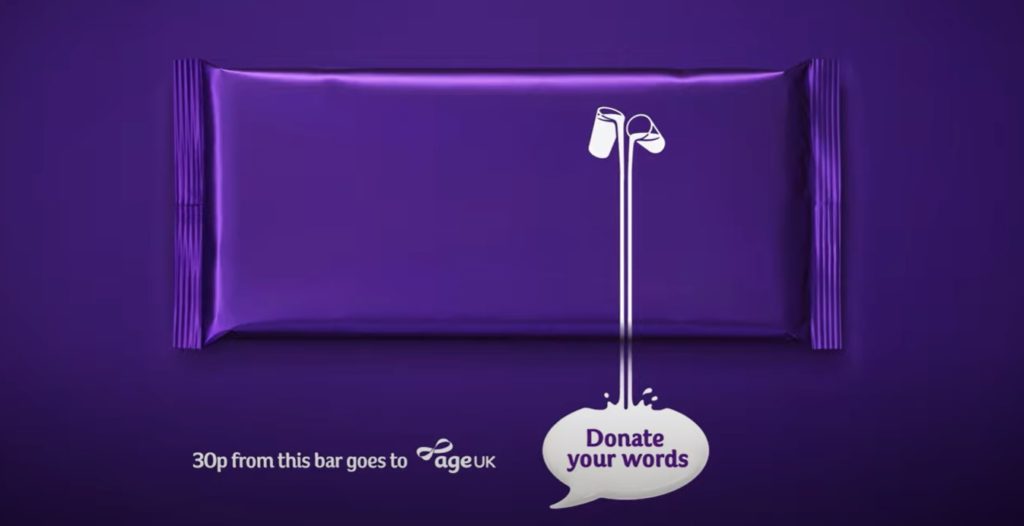
Prior research had shown that the ad would appeal to almost half of the audience that engages with brands supporting social issues. Additionally, almost half of the audience tends to donate to such charities when they believe in the cause (Westminster Business Consultations, 2020). Thus, emotional, and empathetic processing seemed like the best decision for this video ad.
According to statistics from YouGov’s analysis (Shakespeare, 2019), the campaign proved to be successful and brand awareness rose among 60 and over 65-year-old people.
The data showed that the campaign had an impact on increasing the awareness of the societal issue, Cadbury and Age UK’s efforts and the likelihood of purchasing the bars increased by 4.6 points (Shakespeare, 2019).
Additionally, the Cadbury brand has a long history of addressing societal issues meaning that they could expect a greater response to their campaigns since they already attract an audience that is engaged with supporting charities (Westminster Business Consultations, 2020).
Results from the campaign:
Carat – media agency used FB auction buys increasing traffic and achieving “131k link clicks, 63k messaging connections, 4 .1 million users were reached, 3.3m video views of the FB content at a view-through rate of 27.77% exciding initial predictions of 9% VTR” (Falconer, 2020). The video was part of the Facebook campaign and a mini-billboard was used through the Messenger bot to deliver the message (Falconer, 2020).
More video ads communicating the same message were created to support the campaign. In one of them, a woman spends 30 hours in isolation and she self-records her experience, frustration, and fear. The ads were also displayed on Sky TV. Although the campaign was about motivating people to share their worlds and contributing to charity, the company saw a 53% increase in sales in 2019 in comparison to the year before (Carat, 2020).
The video creators argue that loneliness cannot be understood by simply talking about it, since people cannot really relate to it when being surrounded by friends, family, and colleagues.
Thus, the second video of the ‘Donate your words’ campaign displays the self-documenting of Sue when she was placed in confinement as a part of an experiment that was aimed to provoke empathy in the target group that cannot relate to the issue (Carat, 2020).
For the analysis of this ad, I use theoretical frameworks for empathetic processing and viewer identification.
Analysis
I picked the ‘Donate your words 120 “‘ campaign as its focus is primarily on emotional processing. Perhaps, the ad is not as striking as the self-reporting woman in confinement. Though, the three main heroes share their day-to-day lives with the audience and speak about their experiences of being lonely.
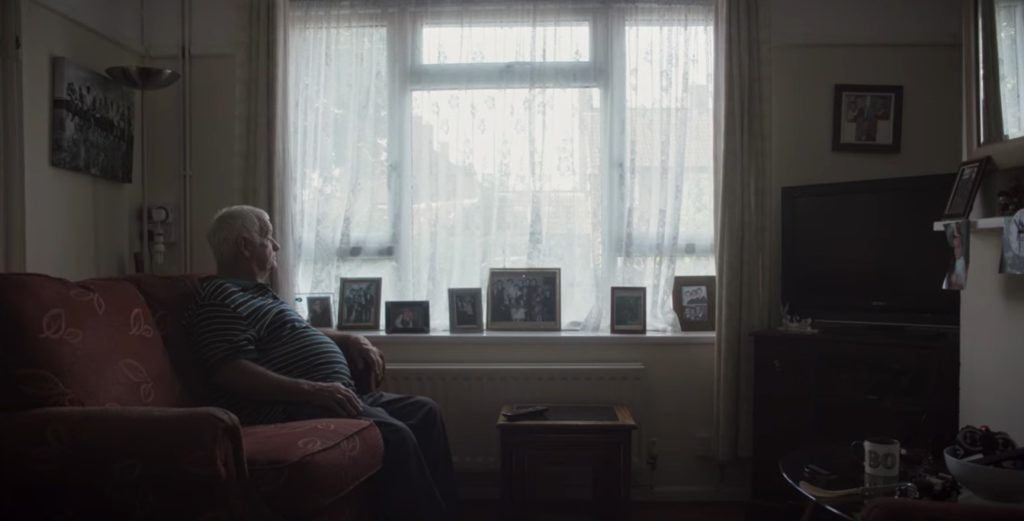
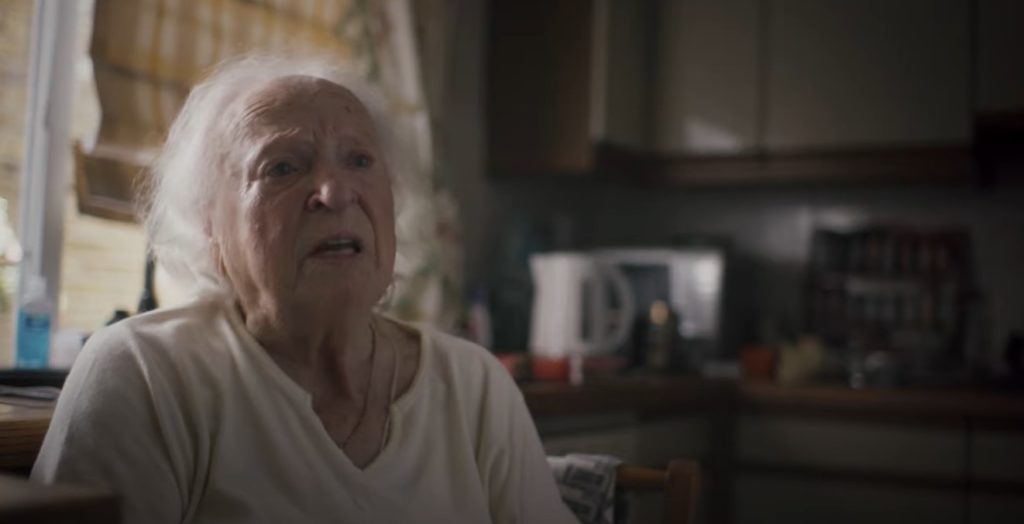

The narrative makes me think of my grandparents, and question if they struggle with loneliness as well. It also reminds me to call them more often. That is why I picked this ad for the analysis.
The common aspect in both Theresa and Paul’s lives is that they became lonely after both their spouses passed away. Paul also shares during the video that he is given up on going outside which is in alignment with the findings from the prior research about loneliness in the UK.
The silence during the entire ad can be noticed. That makes the impact of the words even greater. The characters do not talk excessively either. The heroes in the story all seem concerned when talking about their feelings and daily life. The use of medium and long-distance shots gives a perspective of the space and the atmosphere.
The decor is traditional and religious and reminds us of the time that those people have on Earth indicated by the cross on the wall and the pendulum clock on the rack. The next scene is an extreme close-up of the pendulum moving back and forth only to show us that time is limited and it waits for no one.
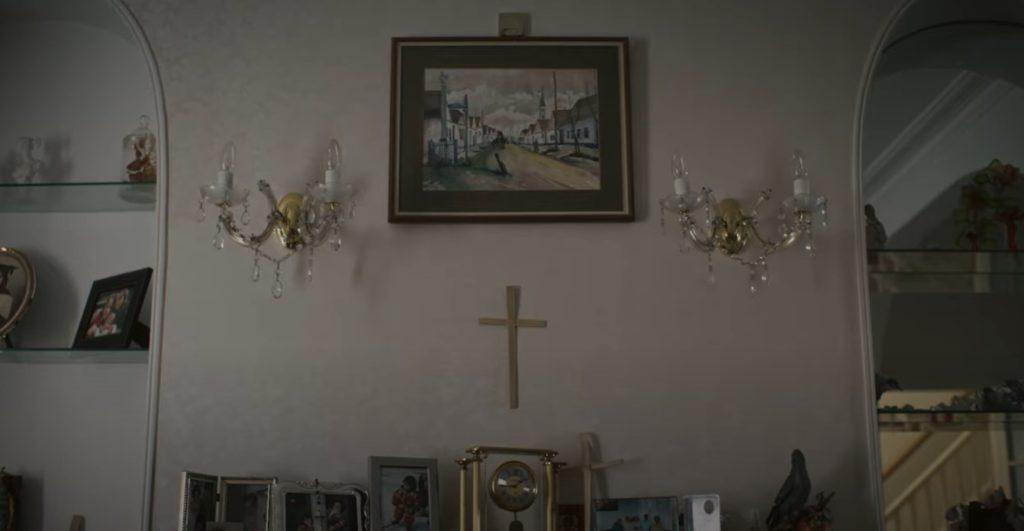
The aged lady is also holding a photo frame that reminds her of her past. A nostalgic scene.

The video is mostly filmed with dimmed lighting which also contributes to recreating those sad feelings. Sometimes, the main heroes are filmed peeking through the window, walking alone in the house, or sitting thoughtfully on a chair.
1. Empathetic Processing
Empathetic processing can be recognized when the viewer feels drawn into the ad, the events in the ad are authentic, and when the ad displays events and feelings to which the viewer can relate (Kim, Ratneshwar, & Thorson, 2017).
The video content can be classified as using empathetic processing since it relies on emotional elements such as the silence, the feelings of the main heroes, their facial expressions, tone of voice, and the low lightning that contributes to creating a sad/negative feeling. Only at the end of the video, the main characters can be seen smiling while chatting with others.
Additionally, to make the argument stronger and appeal to people who have more logical reasoning, the argument about loneliness is supported by research data about the number of people who go a whole week without talking to anyone.
2. Expression of Feeling
Expression of feeling evaluates if the ad encourages appreciation of the quality, excitement, comfort, and enjoyment (Deighton, Romer, & McQueen, 1989).
The ad has a greater focus on the expression of feelings. You can hear the first character in the story talk about how she is ‘alone’ and that ‘is not a nice feeling’.
That can create an emotive response in people who identify themselves with the characters in the story. Additionally, research shows that viewers are less likely to come up with counterarguments and engage in critical thinking when exposed to narrative ads. That makes the ad more credible and trustworthy.
3. Verisimilitude
Verisimilitude is the degree to which the viewer perceives the action in the story as authentic. And the degree to which the event is likely to happen in real life (Deighton, Romer, & McQueen, 1989).
The ad is very similar to a documentary where people get interviewed. That makes the story more credible when it is told by the people who experience this feeling of loneliness themselves and share it with others. And since the campaign is focused on raising awareness of a real-life issue in our society, it makes it even more likely to be authentic and trustworthy since we may know someone in our social circle who is like them.
4. Viewer identification
Viewer identification can be described as a process where the viewer of this commercial can relate to the experience and perspectives of the main character in the story (Kim, Ratneshwar, & Thorson, 2017). Viewer identification also has a moderating effect on character similarity in a study that I conducted.
Since the video ad uses the characters of an aged woman and two aged men who speak about their life in solitude, the target audience that is most likely to identify with the characters are people over 60 and perhaps other people who experience loneliness as well and can relate to the life experiences of the characters.
I personally (a 25-year-old female) find it difficult to identify and understand the main characters since I’m not at that stage of the characters’ lives and I don’t have the awareness of what it is to feel that way.
Even though, I could relate the story to my grandpa who lived alone for some years since my grandma was living in another country. So, even if I do not identify with the characters directly, I would be likely to be engaged with this campaign in a way and do more to connect with my grandparents.
At the end of the video, the viewer sees the impact of connecting with the older generation. The main characters who talk about their loneliness can be seen smiling while chatting with younger people. And there is a call to action that encourages people to look for the campaign and share their words.
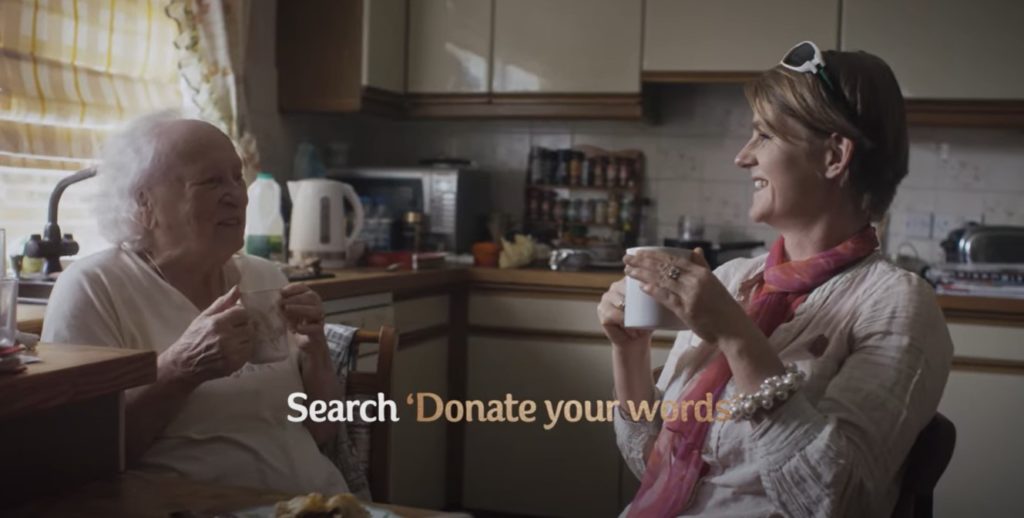
Conclusion
I think the ad does a good job of reminding people about societal issues. It can happen often when you are stressed with work and family to ‘just not have the time to get in touch with the older people, or simply not think that this issue may exist. So, I can understand why people would feel triggered to support this cause or put an effort to talk more often with someone who is well-aged.
Additionally, through viewer identification and emotional processing the brand creates a special bond with the viewer that engages the ego-mind, and it makes it harder for the audience to come up with counterarguments to why this story may not be truthful and authentic (Kim, Ratneshwar, & Thorson, 2017). Thus, there was also an increase in the sales of the company by 4.6 points as the data shows (Westminster Business Consultations, 2020).
Furthermore, the sales of the company were not the main priority of this campaign, though it was perhaps an outcome of the brand seeming trustworthy and authentic by supporting this campaign and contributing to solving the societal issue.
Another factor that could make the brand seem authentic is its long history of being engaged with social responsibility programmes. So, it is also the consistent effort they put to support different campaigns.
And as the advertisement relies more on emotional and empathetic processing it can also be concluded that the viewer relies on both verbal and nonverbal cues of the characters’ feelings to judge the authenticity of the story which makes it more persuasive.
References:
Age UK. (2020, September 9). Share their story. Retrieved from Age UK: https://www.ageuk.org.uk/get-involved/volunteer/donate-your-words/
Carat. (2020, July 6). Work. Retrieved from Carat: https://www.carat.com/work/cadbury-donate-your-words
Deighton, J., Romer, D., & McQueen, J. (1989). Using Drama to Persuade. The Journal of Consumer Research, 335-343.
Falconer, M. (2020, May 13). How Cadbury helps shine a light on loneliness among older generations. Retrieved from Campaign: https://www.campaignlive.co.uk/article/cadbury-helps-shine-light-loneliness-among-older-generations/1682802
Kim, E. A., Ratneshwar, S., & Thorson, E. (2017). Why Narrative Ads Work: An Integrated Process Explanation. Journal of Advertising, 283-296.
Shakespeare, S. (2019, October 16). Cadbury removes words from packaging to highlight loneliness among the elderly. Retrieved from YouGov: https://yougov.co.uk/topics/consumer/articles-reports/2019/10/16/cadbury-removes-words-packaging-highlight-loneline
Westminster Business Consultations. (2020, 3 September). The power of packaging: Cadbury’s Age UK ‘Donate your words’ campaign. Retrieved from WBC: https://www.wbc-uk.com/post/the-power-of-packaging-cadbury-s-age-uk-donate-your-words